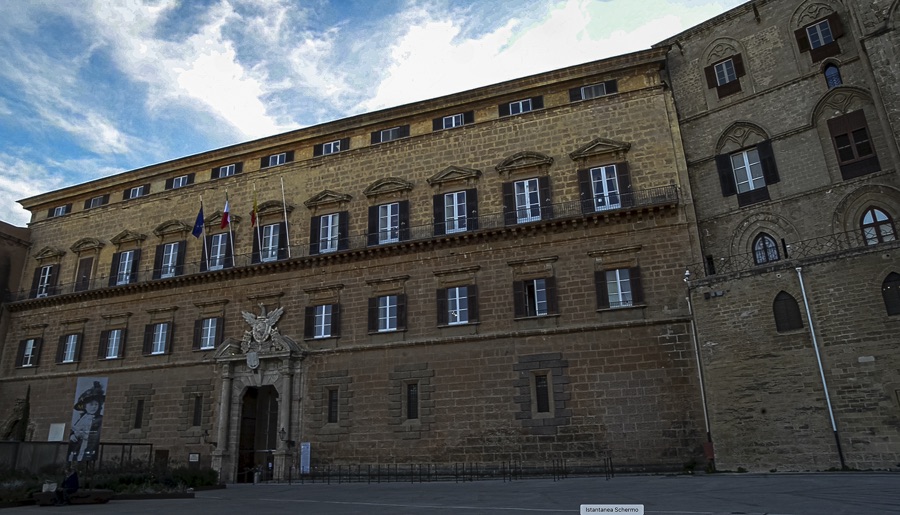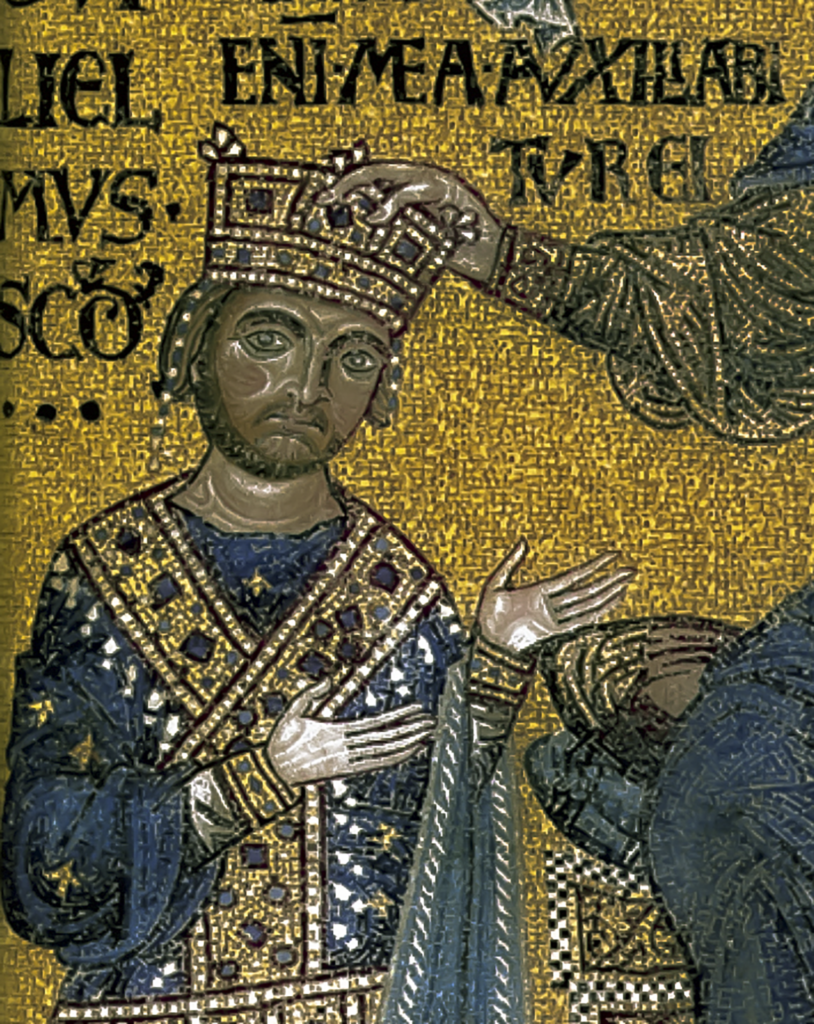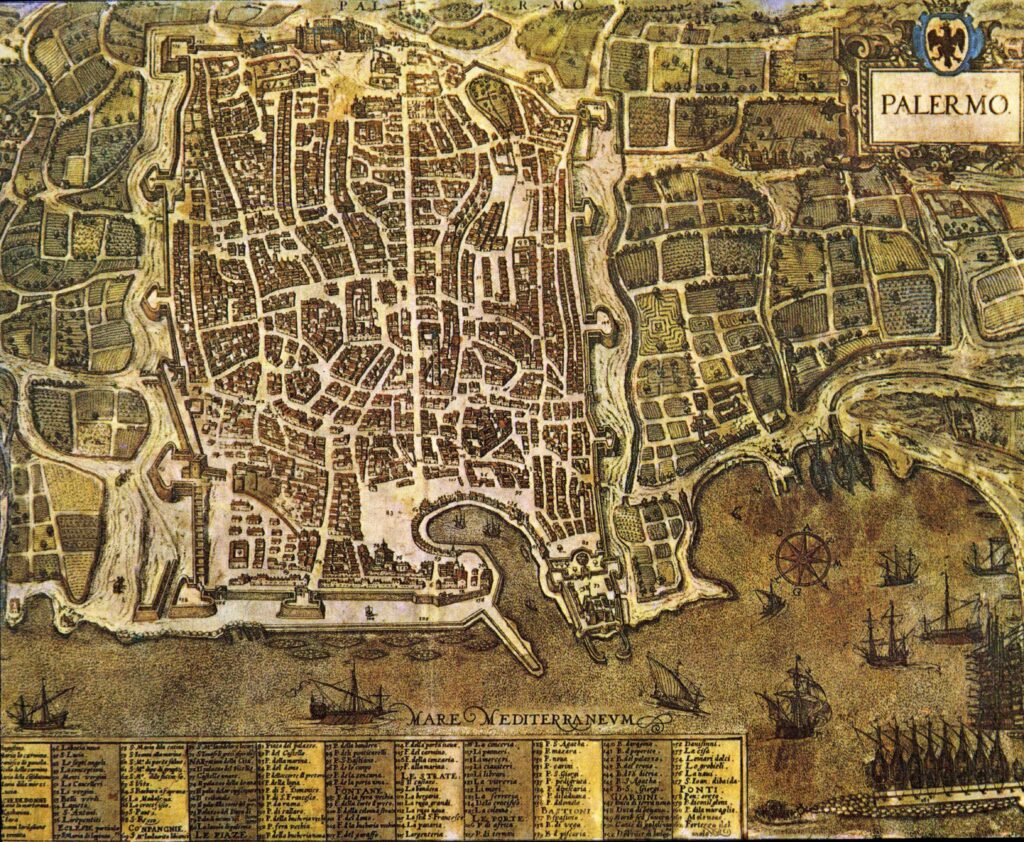The
Norman kingdom
was born on 25 December 1130 when
Roger II
was crowned king of Sicily, Apulia, Calabria and Capua, in Palermo. The precious and sumptuous cloak of the ceremony is preserved, embroidered with gold filigree and embellished with gems and precious stones, made in the
tiraz of Palermo
, the workshop located inside the Royal Palace.

Today, it is housed in the Imperial Museum of Vienna (Weltliche Schatzkammer) and is an excellent testimony to the attention that the rulers paid to art and culture and to the cosmopolitan atmosphere that prevailed when the Palatine Chapel was built.
The city of Palermo experienced a period of prosperity since the Normans managed to maintain an openness towards different styles, religions and cultures after the occupation and conquest of Sicily, which was under Muslim domination for about two hundred years, so much so that the kingdom became a melting pot of worlds, languages and religions, not only western Latin but also
eastern Byzantine
and Islamic. Suffice it to say that there has been a lot of trade with North Africa and the Middle East. Certainly it was the rulers, from Roger II to
William II
,
 who created a dialogue between the populations of the Mediterranean, based on peaceful coexistence, cooperation and the coexistence of different cultures.
who created a dialogue between the populations of the Mediterranean, based on peaceful coexistence, cooperation and the coexistence of different cultures.
During the Muslim rule, the island enjoyed a long period of prosperity, both from an economic and cultural standpoint: new cultivation techniques were introduced, water resources rationalised, mosques, places of recreation and hunting were built, the monetary system was renewed with the introduction of the gold dinar and the silver dirhem, and literature, art, philosophy and poetry were promoted. Following this period, the splendour of the Norman court made Palermo a point of reference for the entire Mediterranean basin. After Roger’s coronation, the city assumed three titles
Prima Sedes, Corona Regis et Regni Caput
After Roger’s coronation, the city assumed three titles
Prima Sedes, Corona Regis et Regni Caput
, i.e. the first seat of the King of Sicily, the place of his coronation and the capital of the Kingdom. This inscription can be found in Palazzo Pretorio, in Villa Giulia’s Fountain of the Genius of Palermo and, of course, in the Cathedral. The latter recurs both in the mosaic panel surmounting the king’s canopy and in a marble plaque located in the southern portico.